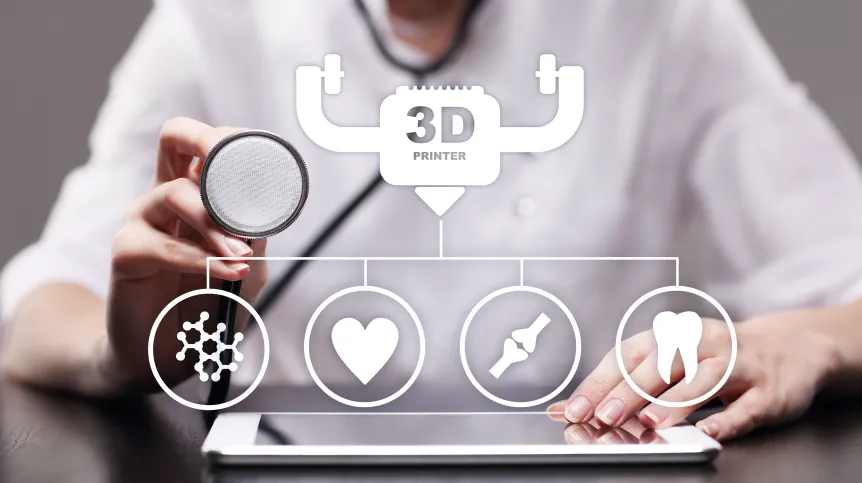
Scientists from three universities in Gdańsk are developing a hydrogel skin dressing using the latest spherical 3D printing technology. This will allow to create patient-specific skin implants in the future.
Scientists from three universities: the Medical University of Gdańsk (GUMed), the Gdańsk University of Technology and the University of Gdańsk have won the 27th edition of the OPUS competition organized by the Polish National Science Centre with their project 'Application of spherical 3D printing to create a multilayer hydrogel skin model'.
'In the future, it will allow to create personalised, spatial skin implants, tailored to the patient', Professor Michał Pikuła from GUMed explains.
In his opinion, tissue engineering has made enormous progress in recent years, but there are still many challenges in this field.
He emphasises that the key problem in creating a skin model is the production of 3D scaffolds that will provide cells with appropriate conditions for adhesion, proliferation and differentiation. 'This is a particular challenge, considering the high sensitivity of cells to environmental conditions', the scientist says.
Professor Sylwia Rodziewicz-Motowidło from the University of Gdańsk emphasises that this project is not only a milestone in the creation of skin models, but also a response to contemporary ethical challenges. 'The ban on testing cosmetics and their ingredients on animals in the European Union forces the development of alternative research methods. Printed skin models provide greater chemical and spatial compatibility with human skin, which makes them an ideal tool for the pharmaceutical and cosmetics industries as well', she believes.
The head of the Tri-City inter-university Farenheit University project, Szymon Mania, PhD, from the Gdańsk University of Technology, also draws attention to this aspect. The scientist explains that bioprinting, a process that uses 3D printing to create biological structures, enables the design of structures at the micro- and macro-scale level, which allows for the precise reproduction of the natural skin niche.
'The development of a material and method for producing +artificial skin+ will allow to create not only tailor-made therapies, but also a research model for research centres to test inflammatory mechanisms, drug toxicity and diseases such as psoriasis or atopic dermatitis', he says.
He reminds that the world leaders in bioprinting are centres such as Harvard and the Massachusetts Institute of Technology (MIT), but thanks to the synergy of scientists from Gdańsk, Poland can become an equal partner in this field.
'The project with the budget of approx. PLN 1.6 million provides an opportunity to not only improve the quality of life of patients, but also develop Polish science on the international stage', he says.
The University of Gdańsk team led by Professor Sylwia Rodziewicz-Motowidło is developing pro-regenerative peptides that will become a key component of the bioink and provide a stimulating effect on regenerative processes. The GUMed team led by Professor Michał Pikuła will conduct research to assess the safety and biological properties of skin models in laboratory conditions, and their clinical potential. Szymon Mania's team of scientists from the Gdańsk University of Technology is responsible for developing a printable cellular bioink, which - after placing skin cells in it, will be adapted for robotic printing. (PAP)
Science in Poland, Piotr Mirowicz
pm/ zan/ mhr/













